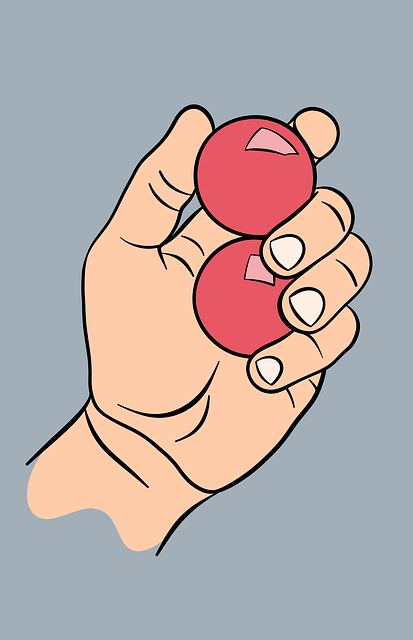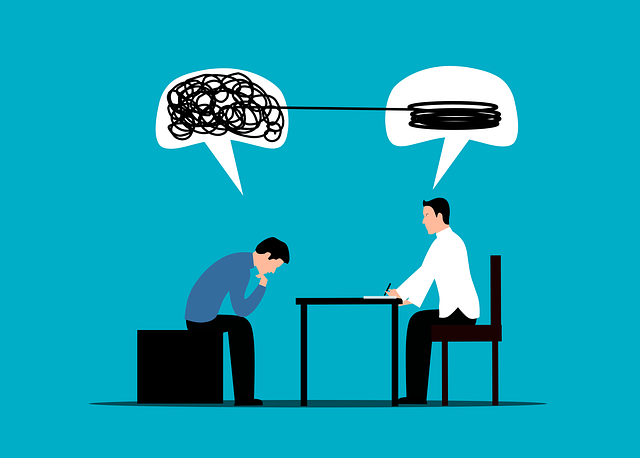Biofeedback is a natural stress relief therapy using sensors to provide real-time feedback on physiological signals. It teaches individuals to control bodily functions, reduce stress levels, and promote relaxation through techniques like deep breathing and muscle relaxation. As an evidence-based method, biofeedback lowers blood pressure, improves heart rate variability, and enhances overall well-being. Regular sessions, combined with proper preparation and guidance, maximize its benefits as a powerful stress relief therapy.
“Stress can significantly impact our overall well-being, but there’s a natural solution gaining traction—biofeedback therapy. This innovative approach empowers individuals to take control of their mental and physical states, offering an effective form of stress relief.
In this comprehensive guide, we explore biofeedback as a holistic method for managing stress. From understanding its principles to mastering techniques and addressing challenges, discover how biofeedback can transform your stress management journey. Uncover the benefits, prepare for your first session, and learn expert tips to unlock maximum relaxation.”
Understanding Biofeedback: A Natural Stress Relief Approach

Biofeedback is a natural and powerful stress relief approach that empowers individuals to take control of their bodily functions and overall well-being. It’s a type of therapy where people learn to understand and regulate their physiological responses, especially during times of stress. By using sensors connected to a computer, biofeedback provides real-time information about various bodily signals, such as heart rate, muscle tension, and skin temperature.
This knowledge allows individuals to make conscious adjustments to their body’s reactions, ultimately reducing stress levels. Biofeedback therapy offers a non-invasive and safe method to manage stress, making it an appealing option for those seeking alternative treatment methods. It’s an effective way to gain control of one’s physical state and cultivate a greater sense of calm and relaxation.
How Biofeedback Works to Calm Your Mind and Body

Biofeedback therapy is a powerful tool in the quest for stress relief, offering individuals a way to gain control over their mind and body’s physical responses. This non-invasive technique allows people to access real-time information about their bodily functions, such as heart rate, muscle tension, and brainwaves. Through sensors attached to various parts of the body, biofeedback provides immediate feedback on these metrics, enabling individuals to learn how to consciously regulate them.
The process works by teaching relaxation responses, helping to break the cycle of stress. When faced with stressful situations, the body naturally triggers a fight-or-flight response, leading to increased heart rate, elevated blood pressure, and muscle tension. Biofeedback helps individuals recognize these physical signs early on and then employ specific techniques to counteract them. By learning to relax muscles, slow breathing, and calm the mind, people can effectively reduce stress levels and promote a state of tranquility, making biofeedback an effective stress relief therapy.
Benefits of Incorporating Biofeedback into Stress Management

Biofeedback is a powerful tool for managing stress, offering individuals a way to gain control over their physiological responses and promote relaxation. By incorporating this therapy into stress management routines, people can experience numerous benefits. One of the key advantages is its ability to provide real-time feedback about bodily functions, allowing individuals to learn and practice deep breathing techniques, muscle relaxation strategies, and mental focus exercises. This self-awareness empowers people to better regulate their bodies’ reactions to stressful situations, leading to improved stress relief therapy outcomes.
Additionally, biofeedback sessions encourage a sense of mastery over one’s health, fostering a positive feedback loop where successful relaxation practices lead to further reductions in stress levels. Over time, regular biofeedback can lower blood pressure, improve heart rate variability, and enhance overall well-being. This evidence-based approach has been shown to be effective for various conditions related to chronic stress, offering a non-invasive and natural method to complement traditional stress management techniques.
Preparing for Your First Biofeedback Therapy Session

Preparing for your first biofeedback therapy session is an important step in your journey towards stress relief. Before your appointment, take some time to understand what to expect. Familiarize yourself with the process, which typically involves wearing sensors that monitor bodily functions like heart rate and skin temperature. These sensors will provide real-time data to help you learn how to control these responses naturally.
Ensure you communicate any medical conditions or concerns to your therapist beforehand. Dress comfortably in loose-fitting clothes to accommodate the sensors. Arrive a few minutes early to fill out necessary paperwork and create a calm, relaxed state of mind. Remember, biofeedback therapy is a collaborative process, so active participation and open communication will enhance its effectiveness as a stress relief therapy.
During the Session: What to Expect and Do

During a biofeedback stress relief therapy session, individuals can expect to be placed in a comfortable and relaxed environment. Sensors are attached to their bodies to monitor physiological responses such as heart rate, skin temperature, and muscle tension. These sensors provide real-time data that allows both the client and therapist to visualize how various relaxation techniques impact these indicators of stress.
In this calming atmosphere, you’ll be guided through specific exercises focusing on deep breathing, progressive muscle relaxation, or visualization. Your therapist will encourage active participation by asking you to follow instructions and respond to what your body is telling them. The goal is to help you gain control over your physiological reactions to stressful situations, promoting a sense of tranquility and improved stress management skills.
Interpreting Biofeedback Readings for Personal Growth

Interpreting biofeedback readings is a powerful tool for personal growth and managing stress. After each session, take time to reflect on the data gathered—heart rate variability (HRV), skin conductance, and muscle tension levels. These readings provide insights into your body’s response to various situations, helping you identify triggers that increase stress levels. For instance, elevated HRV during a specific activity may indicate heightened arousal, prompting you to explore healthier coping mechanisms.
By regularly monitoring these biofeedback signals, individuals can learn to recognize patterns and make conscious adjustments to their behavior. This process fosters self-awareness and enables people to take charge of their stress response. Over time, with consistent practice, biofeedback readings can serve as a barometer for personal progress in managing stress, ultimately enhancing overall well-being and resilience.
Integrating Biofeedback Techniques into Daily Life

Integrating biofeedback techniques into daily life can significantly enhance one’s ability to manage and reduce stress. This involves learning to recognize physiological responses to stressful situations, enabling individuals to activate relaxation strategies proactively. Through regular practice, individuals can train their bodies to respond to triggers with calmer, more balanced states. Biofeedback sessions often teach key skills like progressive muscle relaxation, deep breathing exercises, and mindfulness techniques that can be easily incorporated into daily routines.
For instance, setting aside just a few minutes each morning for mindful breathing or engaging in light stretching during work breaks can serve as effective stress-relieving practices. By making these techniques part of one’s everyday life, individuals gain a powerful tool to navigate challenging situations and promote overall well-being, making biofeedback a valuable stress relief therapy option.
Common Challenges and How to Overcome Them

Biofeedback therapy for stress offers a powerful tool in navigating life’s challenges, but it’s not without its common hurdles. One significant obstacle is adherence; many individuals struggle to commit to the consistent practice required for effective results. To overcome this, emphasize the importance of setting realistic goals and integrating biofeedback into daily routines. Start with manageable sessions and gradually increase duration as comfort levels rise.
Another challenge is the initial learning curve. Understanding and interpreting biofeedback signals can be confusing. Providing clear, accessible resources and guidance is vital. Educate clients on the basics, demystifying the process, and empowering them to actively participate in their stress relief therapy. Regular sessions with a trained therapist can also offer support, ensuring individuals feel empowered to continue their journey towards managing stress effectively.
Expert Tips for Maximizing Stress Relief Through Biofeedback

Biofeedback is a powerful tool for achieving optimal stress relief, but maximizing its benefits requires a strategic approach. One key tip is to set realistic goals. During your sessions, work with your therapist to identify specific areas of focus, whether it’s reducing muscle tension or regulating heart rate. This targeted practice will enhance your ability to relax and provide more tangible results.
Consistency is another vital aspect. Regular biofeedback sessions over a sustained period allow your brain to wire itself for better stress response. Consider integrating these sessions into your self-care routine, just like you would schedule time for exercise or meditation. With dedicated practice, you’ll soon notice an increase in your overall stress resilience and a deeper sense of calm.
